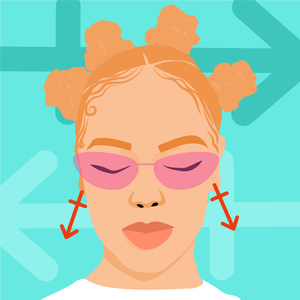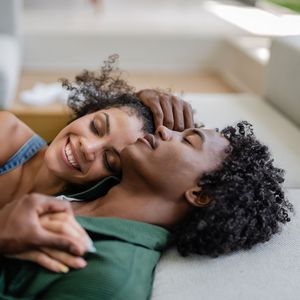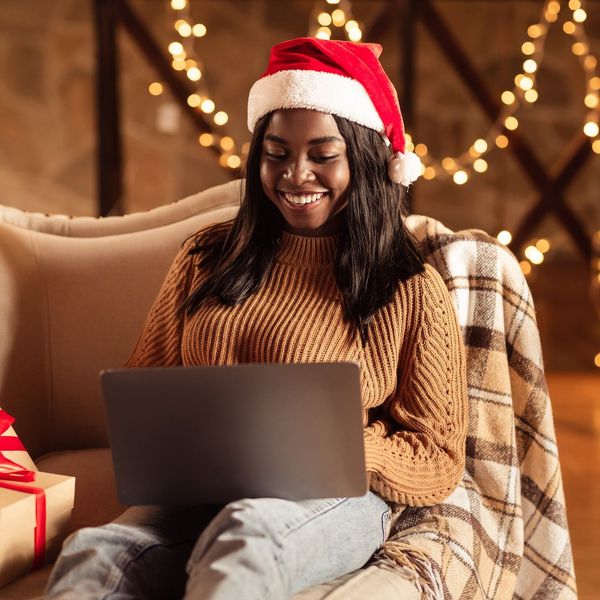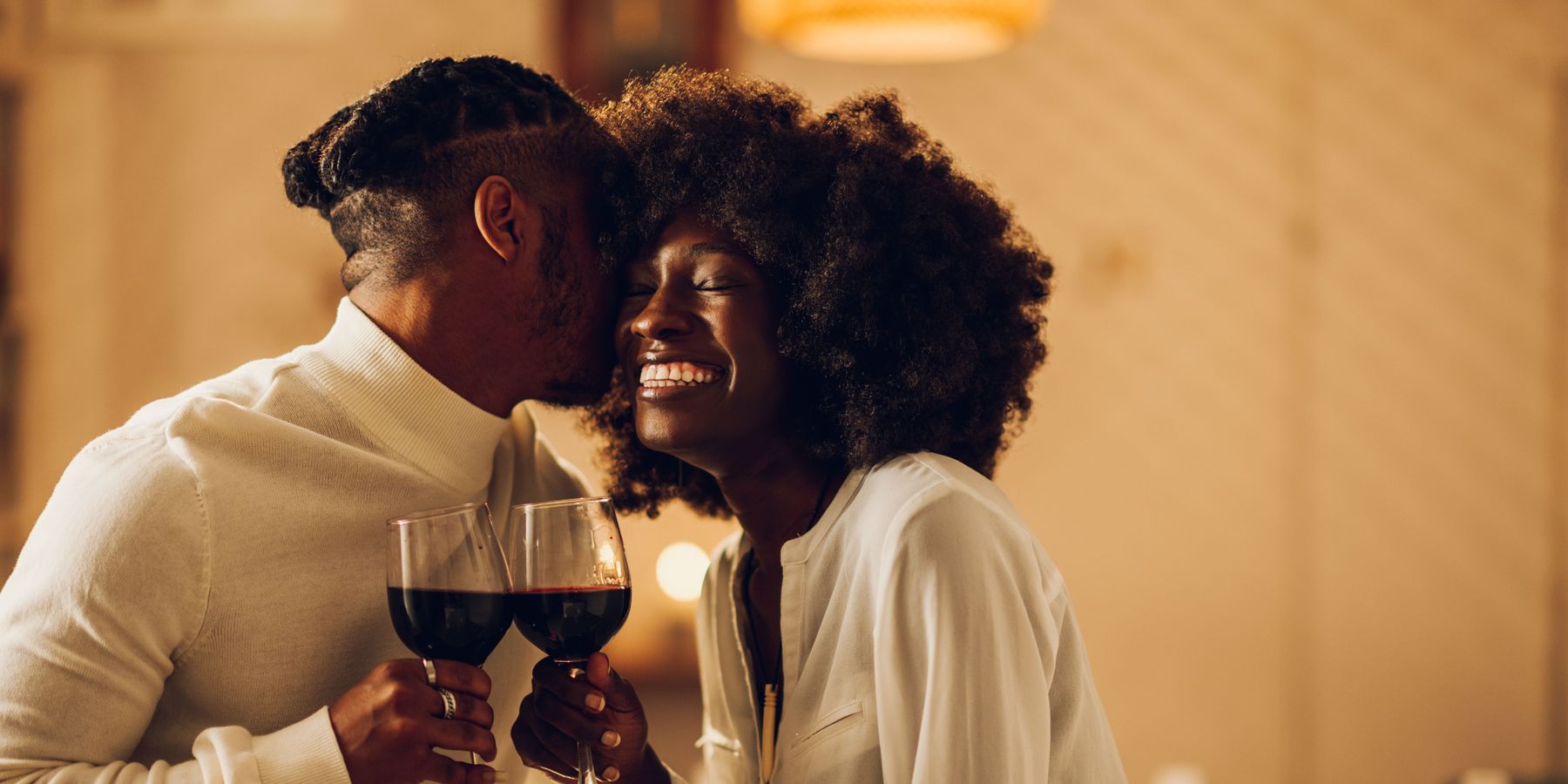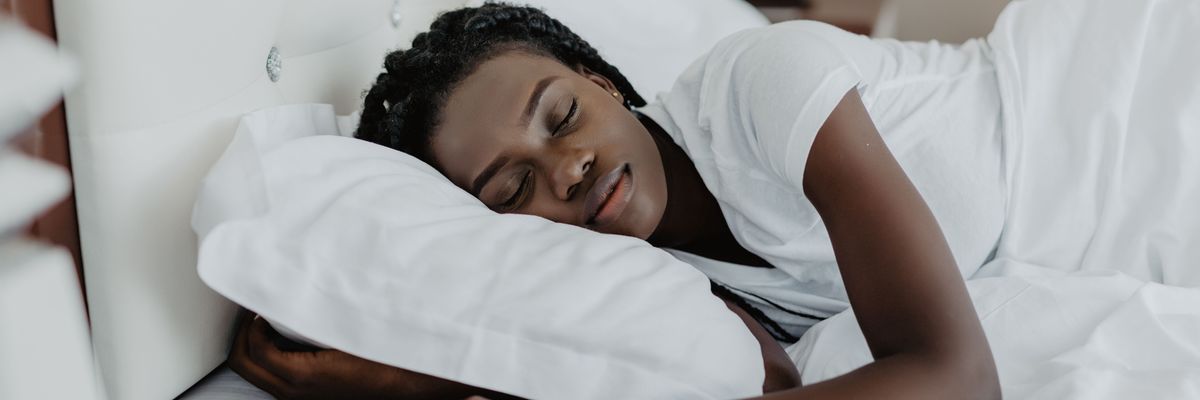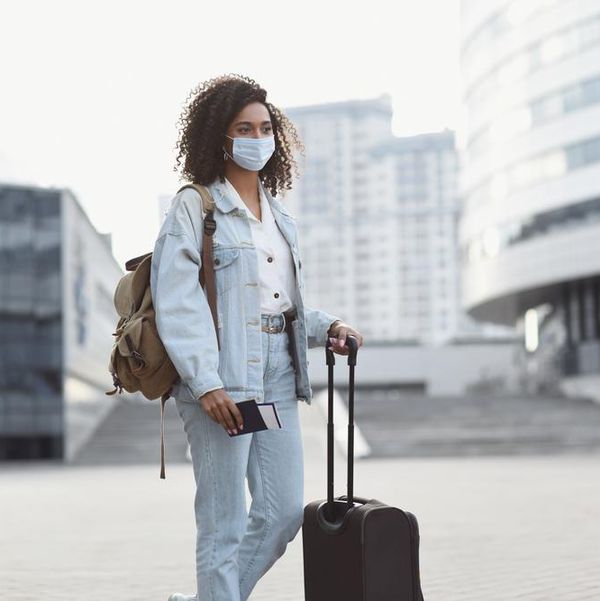
Since COVID-19 became a global pandemic in March, the travel industry has taken a major hit. And it's understandable that many people still aren't traveling, even with borders open and stay-at-home restrictions lifted. But, for those of us who live abroad, enjoy taking trips, or have loved ones in other countries, travel during pandemic times is a hard but necessary decision to make.
I'm one of the brave—and to some, crazy—souls who decided to travel shortly after borders reopened. I had my reasons, and so do others who have made the choice to go abroad even with the pandemic still looming. Here are our stories:
(Quick disclaimer: This is in no way meant to encourage travel at this time. It's simply a resource to inform and engage those who might be considering it.)
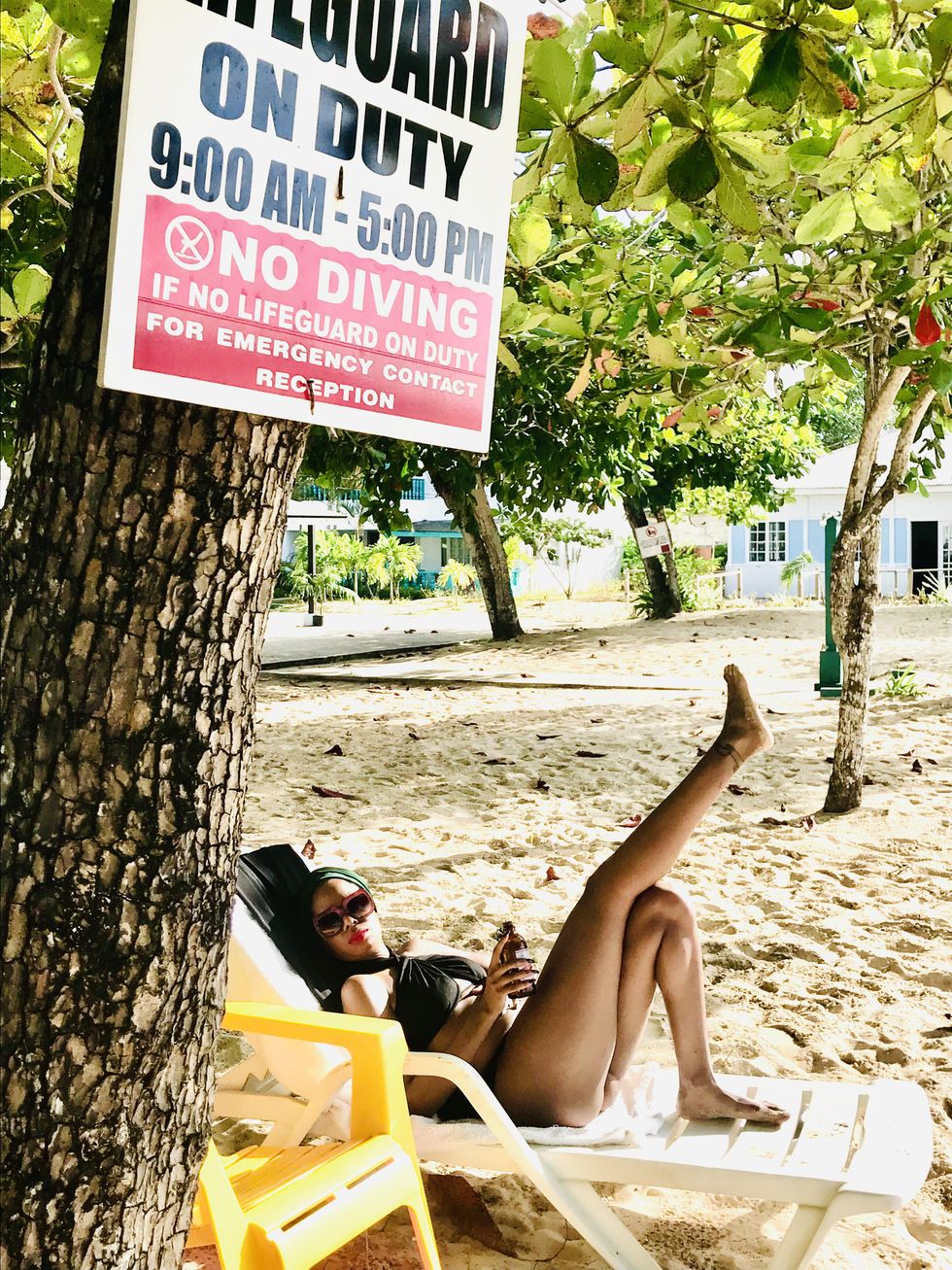
Image courtesy of Janell Hazelwood
Why I Chose to Travel During a Pandemic:
Janell: I've been in a long-distance relationship for three years, and not being able to see my fiance for months on end became devastating. Jamaica was like a second home, and frequent travel there had been my saving grace. I'd self-isolated for the whole month of March, and I'd been working from home even before the pandemic. I really didn't leave the house—even in the months thereafter—except the occasional walk around my yard or visit to the patio. When I needed food, toiletries, or groceries, I'd just have them delivered and left at my doorstep.
The pandemic brought a lot of hardship to my life, including loss of income, client reductions, and bouts of severe depression. I had flight credits, tickets that could be adjusted, and I was in good health. (I hadn't even had a common cold.) By September, the Jamaican government had reopened borders, so I decided to just go.
Jonathan: I've been in the hotel industry for the past 13 years. In March, I was furloughed as a result of COVID-19 and [was later] terminated. I had planned a trip to Peru in March and the week I was scheduled to depart, they closed their borders. Furthermore, I had planned a five-country tour to India, Thailand, Vietnam, Laos, and Hong Kong in April. Needless to say, that was canceled. So COVID changed my life personally and professionally.
I needed a mental break—with being furloughed, moving to a new city, being forced to stay in the house, and the racial tension. That was a lot of trauma to experience first-hand. I needed a quiet place to lick my wounds, recharge, and reevaluate some things.
Francesca: When the pandemic hit, I had plans to return to the Caribbean in time for carnival season. I am a full-time travel and lifestyle influencer, and I cover Caribbean travel pretty extensively. It was shocking to see borders close almost overnight. Some were giving as little as 48-hour warnings before halting flights.
"It was like my whole world changed overnight. It became especially painful as countries started announcing various travel bans."
I wanted to get back to see my partner in Martinique. We had been separated for so long, and I knew once borders started to open that I had to act quickly because just as soon as they had opened, they could very well close again.
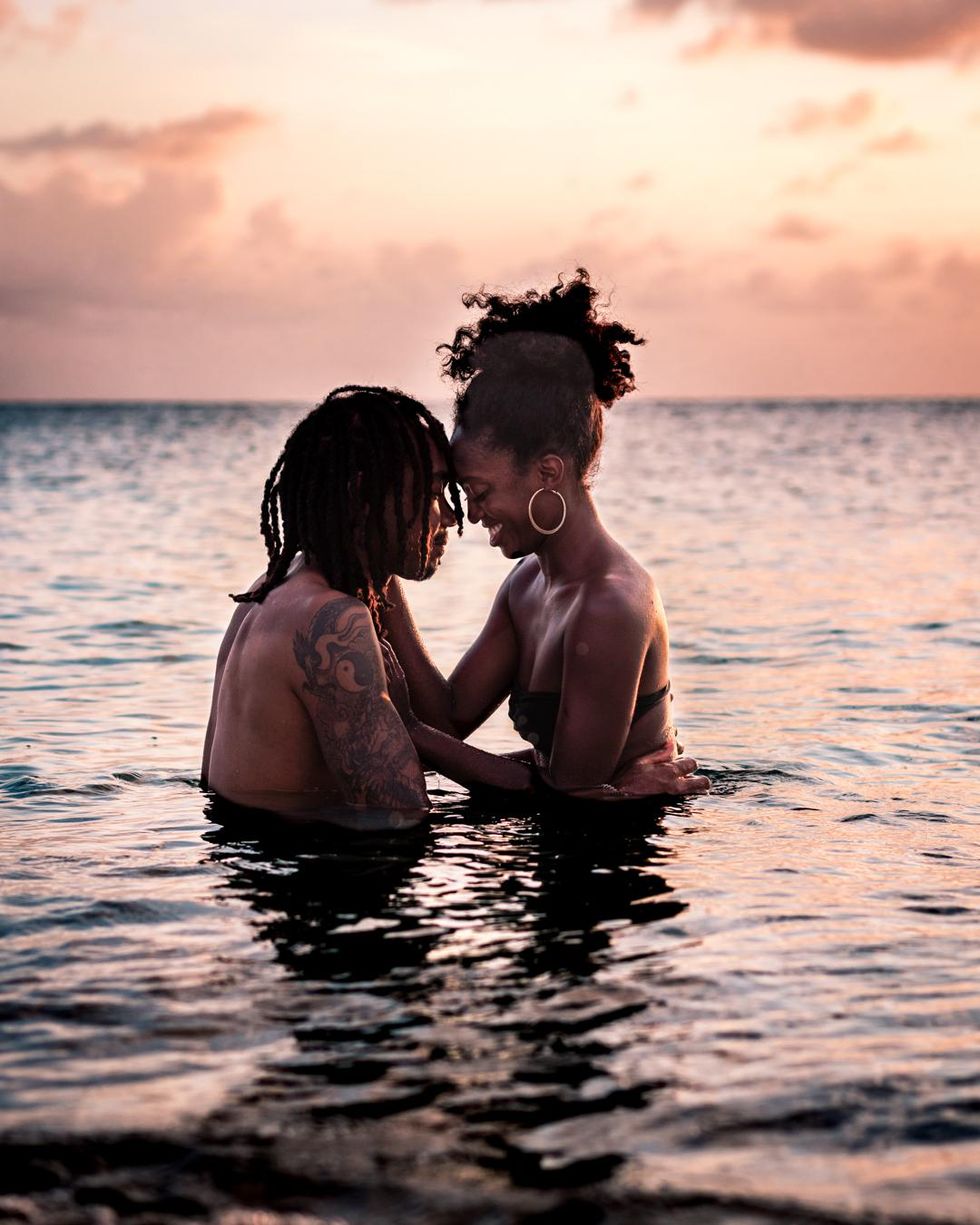
Photo by Willy Joseph-Louis
How to Prepare to Travel in a Pandemic:
Janell: Initially there was a bit of confusion on my part about the process. Early on, I'd heard rumors that you needed to download an app and get a COVID test before your trip, but I thought that was only for certain states. I was wrong. There indeed was—and still is—a pre-approval process for all travelers coming from the U.S.
Long story short, instead of confusing myself further by relying on YouTube videos and travel discussion threads, I went to the official authorities via VisitJamaica.com. This was the most detailed, accurate, and up-to-date resource. I had to get a COVID test, submit an application online with the negative test results attached, and then wait. The website indicated that it would take at least 48 hours for review, which was nerve-wrecking. It actually took four days, and I had to push my flight date back (yet again). I didn't mind because I'd be there for a little over a week, so losing a day or two wasn't a big deal.
The travel authorization was sent via email, so I screenshot it on my phone. I also printed out a copy of my negative PCR test, which was the test required at the time to move forward in the authorization process. I downloaded the JamCovid19 app just in case I'd be required to use it. (For more information on travel guidelines and restrictions, you can also visit the U.S. State Department site or the CDC website.)
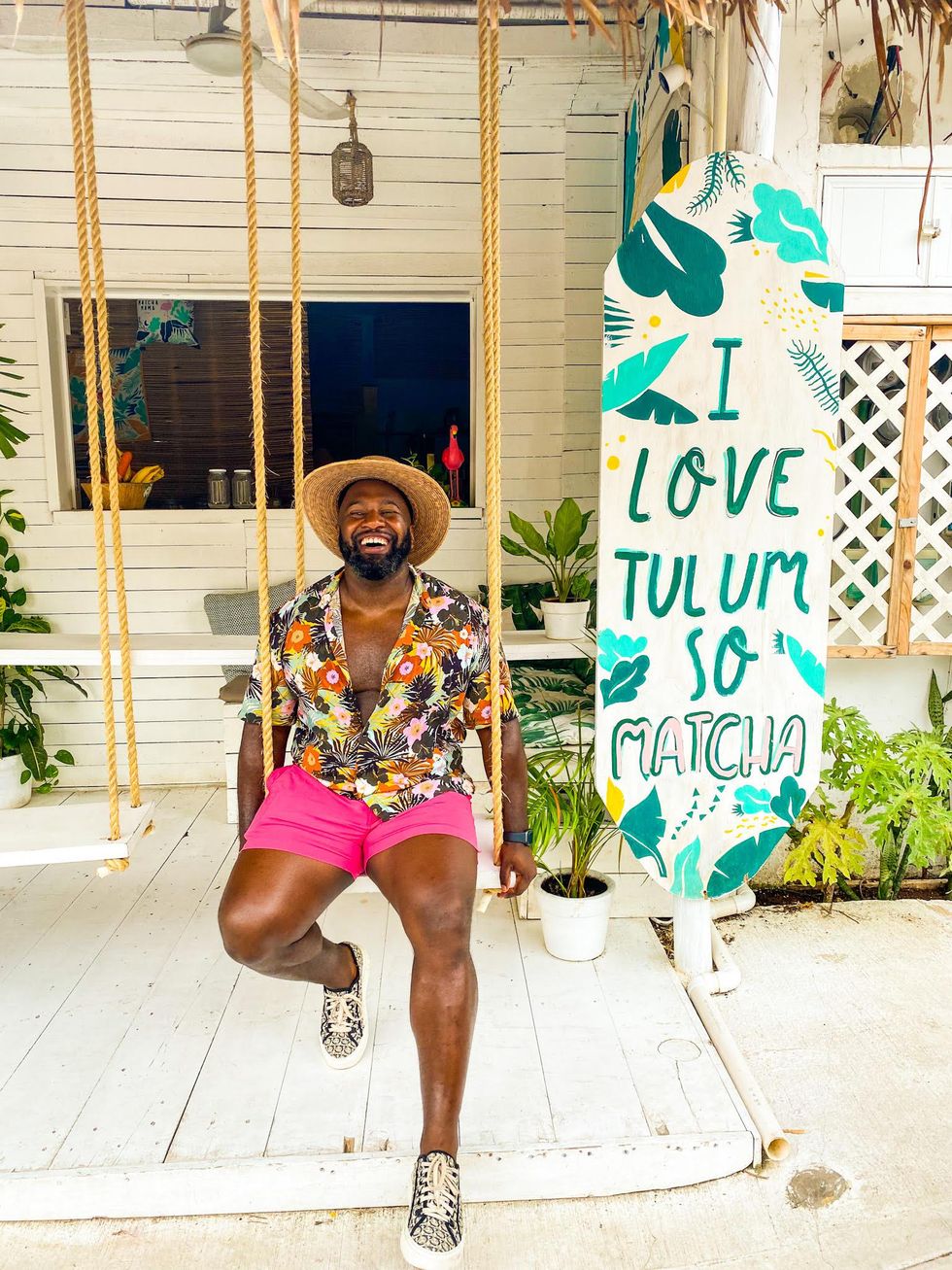
Image courtesy of Jonathan Curry
Jonathan: I went to Tulum, Mexico. [At the time], they didn't have any restrictions on travel nor did they require a COVID test to enter. The process was very seamless. I made sure I read all of the current government standards of the country. I packed several masks and Clorox wipes to wipe down my seats and table.
(For more information on current travel restrictions or requirementsin Mexico, please visit the U.S. Embassy and Consulates website here or the U.S. Department of State website.)
Francesca: I did a lot of research before booking my flight. I was more concerned with safety protocols than I was with flexibility. Ultimately it came down to two different airlines, and I ended up choosing the one that had a blocked middle seat over my usual airline where I accrue miles.
I brought a mask, of course, plenty of hand sanitizer, and my own food. Receiving a negative COVID test 48 hours before flying also gave me great peace of mind. I could assume that since it was an entry requirement, everyone I was traveling with most likely was negative as well.
(For more information on travel requirements and restrictions in Martinique, visit the CDC website or the U.S. Department of State website.)
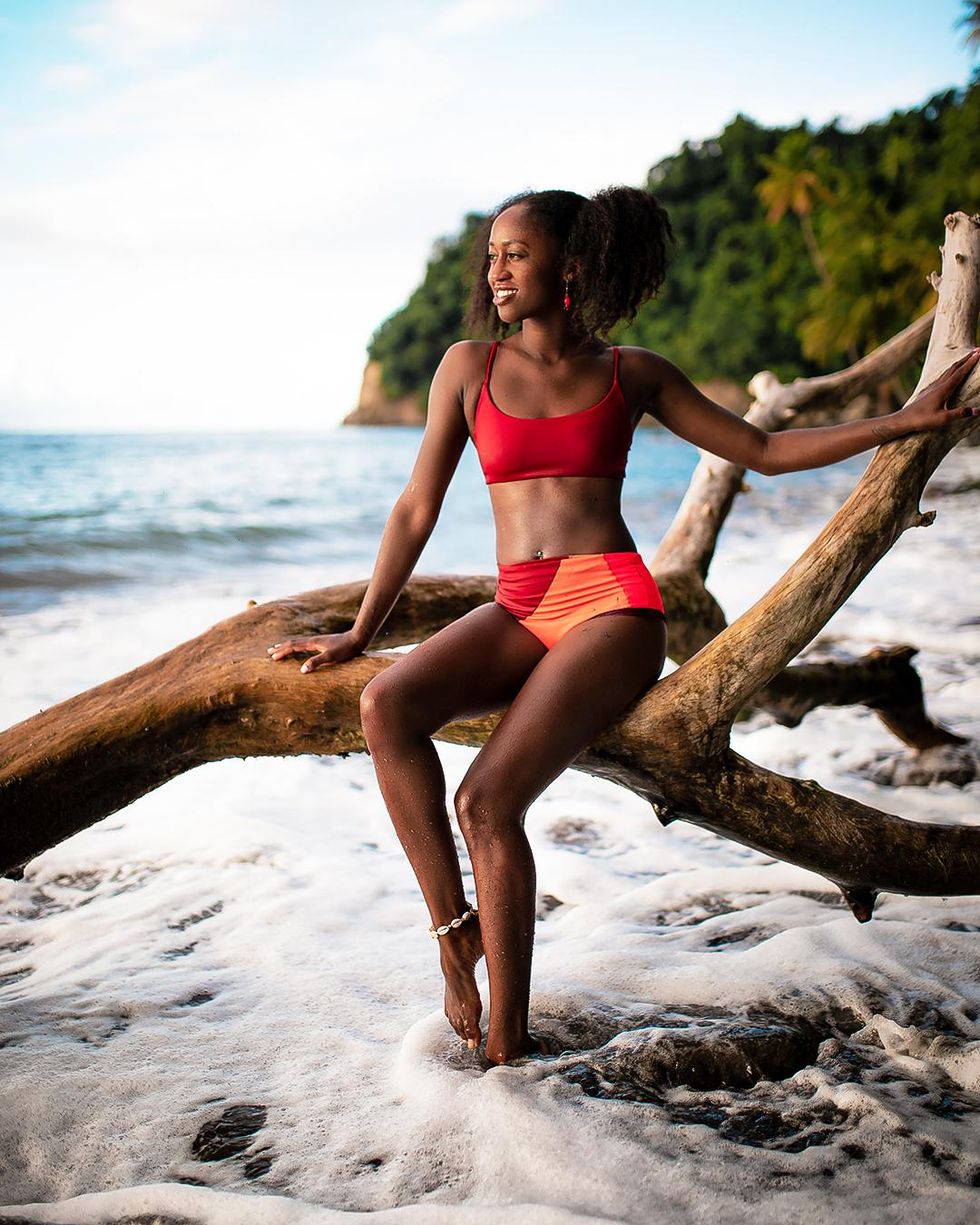
Photo by Willy Joseph-Louis
What to Expect at the Airport & Upon Arrival:
Janell: I could not check in for my flight online, as I typically do. It was not allowed for international trips. I had to wait for the desk to open at the airport and check in with an associate. Other than that, the airport process and experience in the States was the same as it had always been except there were less people, you had to present your authorization document, and there were masks and social distancing requirements.
Upon arrival in Jamaica, I was delightfully surprised. The lines were typical but there was social distancing and an extra process added to the usual ones that involve customs and baggage claim. I'm always prepared to spend at least an hour at the Montego Bay airport during normal circumstances, and the extra process of checking my travel authorization document, getting information about my health and lodging plans, and listening to instructions on how I would quarantine only took an extra 30 minutes or so.
The officials and airline workers were kind, straight-forward, and efficient. My temperature was taken, and I was given a form with information on quarantining. I was also instructed about the "resilient corridor" limits I was to remain within during my stay and told what to do if I suddenly had any symptoms of COVID. (I wasn't told to download or use the app. I'm not certain as to why, but I kept it on my phone anyway. I suspect it was due to my length of stay and my choice to book at a compliant hotel.)
The experience was the total opposite of the nightmares of three-hour waits, scary soldiers, and double testing that I'd heard about.
Jonathan: Outside of the mask mandate, the airline didn't have any other restrictions in place. Fortunate for me, the middle seat was empty next to me and another young lady occupied the window seat. The flight was about 65-percent full. The airport was quiet, all the lines were very short, and there were limited food options in the concourse. You could cancel and get a flight credit with the airline.
Once I arrived, I had to keep my mask on throughout the airport. They had markers [6 feet apart] on the floor to make sure you weren't too close to your neighbor. Once through customs, I went through a non-intrusive temperature scan.
Francesca: I was impressed by how strictly the airline was enforcing their mask policy. I heard that they had added nearly 100 people to their no-fly list for non-compliance. They meant business!
I found that once it came time to fly, the airport was surprisingly empty. I think I interacted with less people throughout the flying experience than I do going grocery shopping.
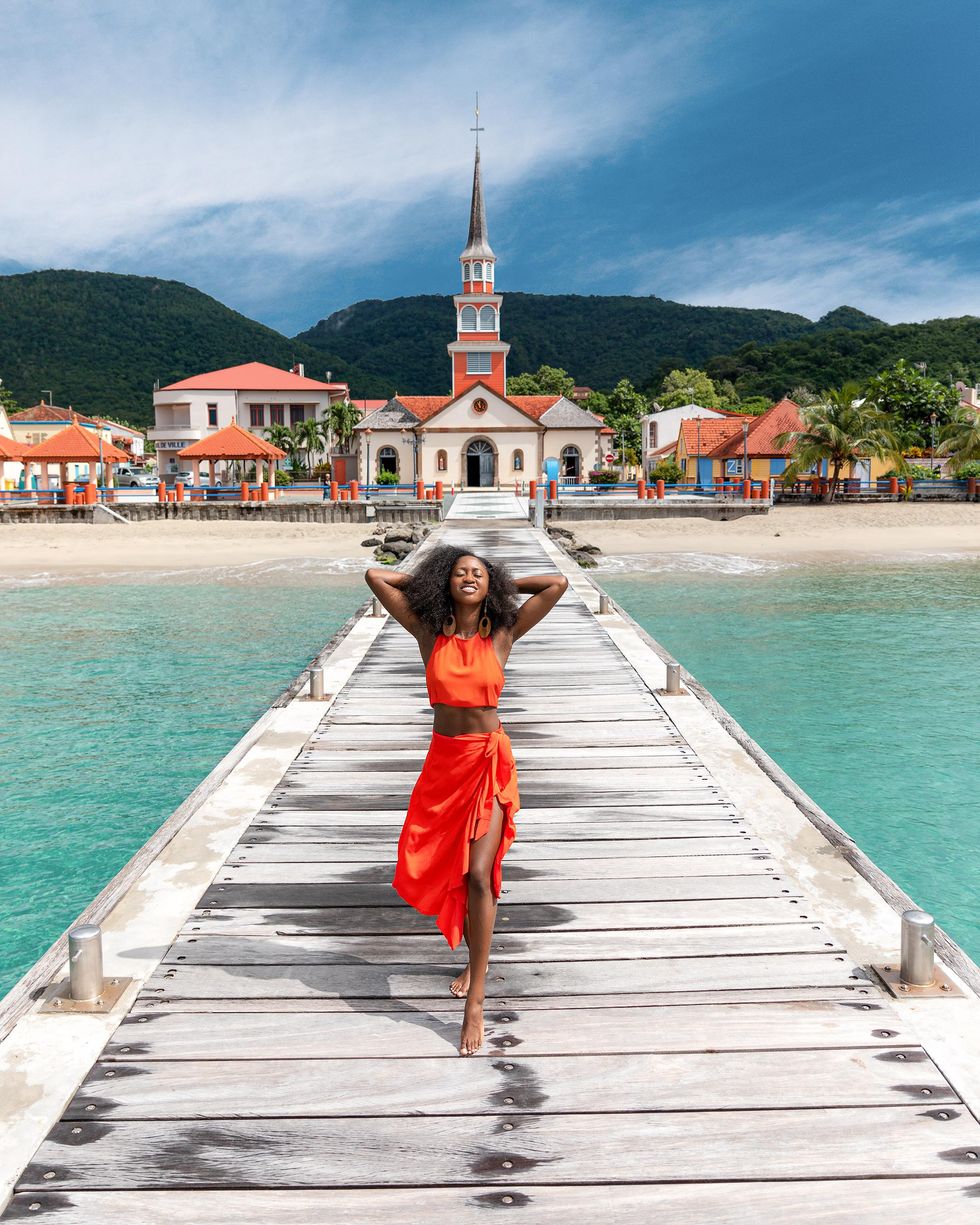
Photo by Willy Joseph-Louis
The Trip Experience:
Janell: Typically, I'm able to go wherever I want, and I'm all over the place. I might be in Kingston one weekend, Negril, Savanna-la-Mar, Hanover, or Lucea the next, then off to Montego Bay. That totally changed. It was literally like a ghost town compared to the usual, and a curfew was being enforced. Though I did not have to download the app and check in via video, I didn't feel comfortable going anywhere other than the nearby beach, adjacent shops, the hotel pool, and back to my room. My fiance would bring food or we'd order in. The cleaning staff disinfected my room daily, the few people on site practiced social distancing, and everyone wore masks. (Negril Beach Club is actually a favorite of ours and the vicinity to Seven Mile Beach is divine.) I also noticed that most places required temperature checks and hand sanitizer use before allowing tourists to enter.
At my hotel, the vibes were super-mellow—even for Jamaica—and there were hardly any other tourists to talk to or at least be around—even at a distance. It got a tad boring and monotonous after three days because I'm used to being able to go on excursions or local adventures, however, I remembered why I was there—to spend time with my fiance. That was good enough for me. Due to quarantining, I was also able to watch the landmark general elections on TV with him and witness the honking cars and small celebrations from our balcony—a historical moment for us to share.
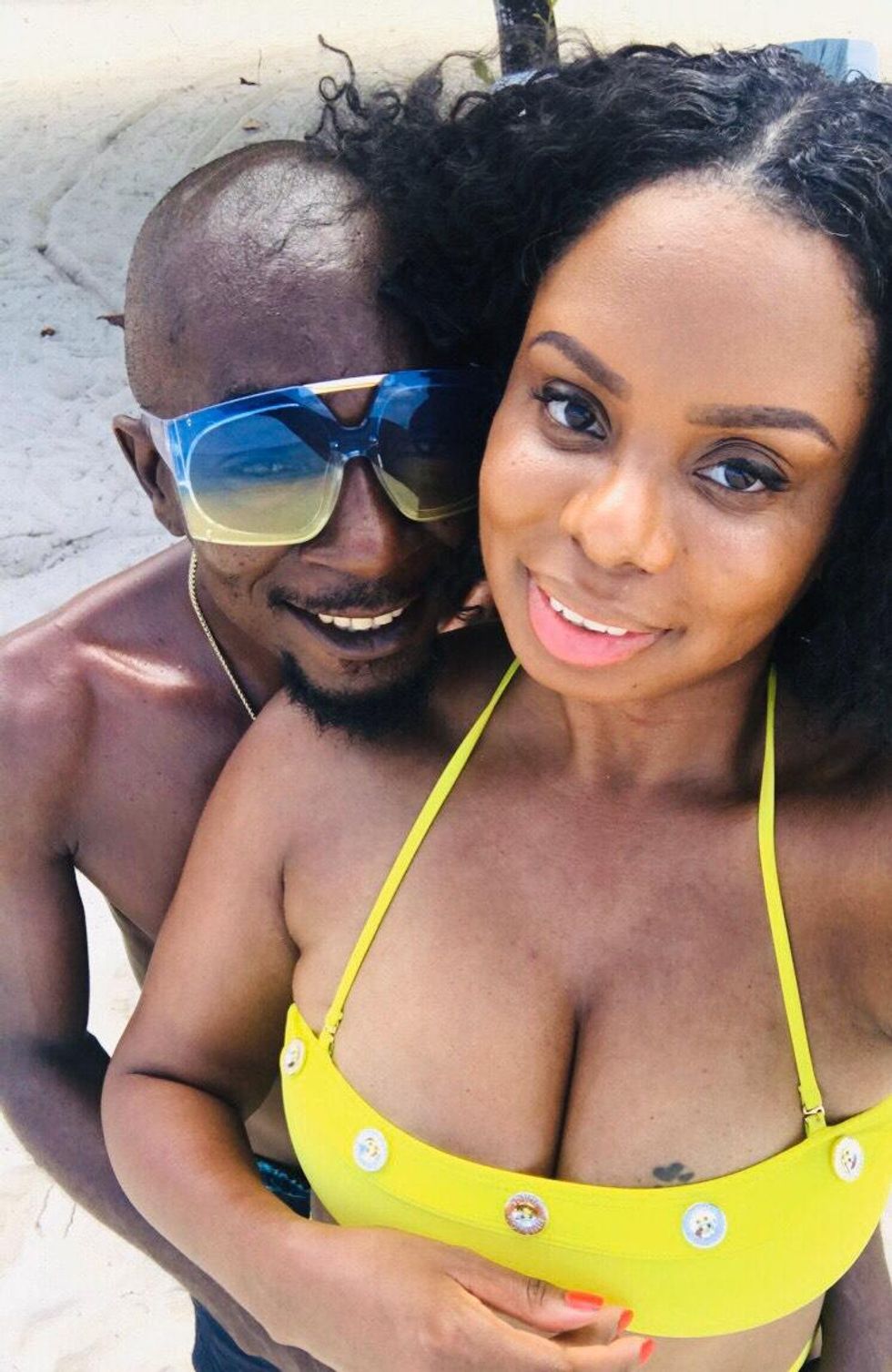
Image courtesy of Janell Hazelwood
Jonathan: Tulum still had some action when I first arrived, however beaches closed at 5pm and there was an 11pm curfew.
Francesca: My experience landing was a bit strange because I'm used to landing at an airport and being immediately surrounded by people. There were no large groups eagerly awaiting loved ones, and the airport was nearly empty. I was pleased to see the people who were present were wearing masks and respecting social distancing guidelines.
Travel Tips for Traveling in a Pandemic:
Do your research. Don't just rely on hearsay or online videos. While they might be helpful, look to the official authorities about what's required for travel and the recommendations based on where you want to go. Also, pay close attention to the cancellation, business hours, or booking policies of hotels, airlines, major attractions, and travel agencies.
If you're required to pre-test for authorization, be sure to get the correct test at the correct time. As of recent, test results can't be more than 10 days old and there are specific types of tests required. Ask your healthcare provider or test administrator lots of questions and make sure you're getting the correct type at a certified center or lab. Print out your results and authorization as well.
Go with an open mind and release the selfish vibes. COVID-19 is still very real, and the fears of locals are warranted, so if you're not able to freely do the things you're used to doing on vacation, make the best of it. Be grateful for the front-line workers serving you at the hotels, beaches, airports, and restaurants, and show that gratitude by tipping well and following protocols.
When in doubt, just stay home. If it's not an emergency or there's so much involved with planning that it causes you and your family unnecessary stress, wasted time, and extra money, reconsider traveling at all. Many airlines, hotels, and travel agencies are offering options for cancelling or rescheduling trips, and to be honest, this might be the time to do a domestic solo trip in your town or to focus on other goals.
Jonathan:
Have a plan B. With restrictions returning, have another plan just in case things get canceled.
Assess your tribe. [This is] your community that you come in contact with on a daily basis. Is anyone in your tribe high-risk as it relates to COVID? Are you able to quarantine in isolation if you contract it? We all have to do what we feel is best for us while still considering the community we will return to. Get yourself tested before and after travel, for your own safety and the safety of others.
Francesca: The No. 1 thing is to comply with local health regulations and consult official websites frequently. The situation is constantly evolving, and staying on top of it is critical. And please, wear a mask and wash your hands frequently!
For more of Janell, Jonathan, and Francesca, follow them on Instagram @janellirl, @thejonrobert, and @onegrloneworld.
Featured image by Shutterstock
This Is How To Keep 'Holiday Season Stress' From Infecting Your Relationship
Hmph. Maybe it’s just me, but it seems like there is something really weird happening in the fall season air (because winter doesn’t officially begin until December 21) that cuddle season is in full swing while break-up season is as well. In fact, did you know that break-ups are so popular during the holiday season that December 11 is deemed Break-Up Day?
The reasons why relationships shift around this time vary; however, I did both roll my eyes and chuckle when I read that a very popular one is because it’s an easy way to get out of getting one’s significant other a Christmas present. SMDH.
Anyway, I personally think that the less shallow folks out here may contemplate calling things “quits” or they at least distance themselves a bit from their partner (and what I’m referring to is serious relationships) due to all of the stress and strain that oftentimes comes with the holidays whether it be financial, familial, due to their tight schedules or something else.
Listen, I would hate for you and your man to miss the fun and happiness of experiencing this time of year, all because you are so overwhelmed or irritated that you can’t really enjoy it. That’s why I have a few practical tips for how to avoid allowing the typical holiday season stress from INFECTING your relationship.
Manage Your Expectations
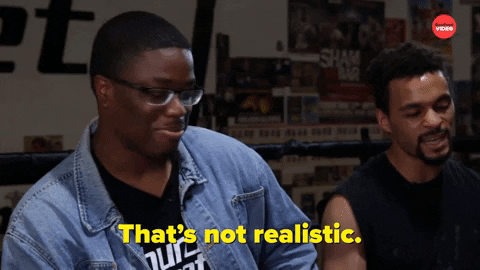 Giphy
GiphyUnmanaged expectations. If there is a main reason why the holiday season tends to be so stress-filled for so many people, I’d bet good money that this is the cause. And when you’re in a long-term relationship, expectations can manifest themselves in all sorts of cryptic and/or unexpected ways. You might have relatives who assume that you are going to be with them for Thanksgiving or Christmas when you have other plans in mind. You might be thinking that you are going to spend one amount for presents while your man is thinking something totally different. When it comes to scheduling, your signals may be crossed.
And you know what? To all of these scenarios, this is where clear and consistent communication come in. Don’t assume anything. Don’t dictate anything either. From now until New Year’s, mutually decide to check in once a week, just to make sure that you are both on the same page as it relates to the holidays and what you both are thinking will come along with it. The less blindsided you both feel, the less stressed out you will be. Trust me on this.
Set (and Keep) a Budget
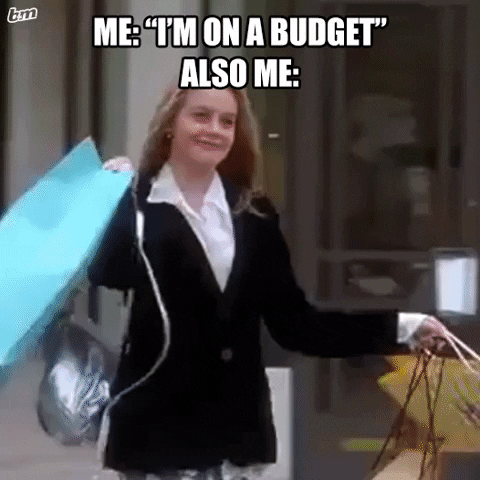 Giphy
GiphyOkay, so I read that last year, 36 percent of Americans incurred some type of holiday-related debt. Hmph. Last year, there was still some sense of normalcy in this country, chile, so I can only imagine what finances are gonna look like over the next several weeks. That said, since I don’t know a lot of people who don’t find being broke stressful, make sure that you and your bae set a budget and then stick to it this year — no ifs, ands or buts.
Because really, y’all — it doesn’t make sense to deplete savings and/or max out credit cards for a few days of giggles only to be damn near losing your mind because you don’t know how to make ends meet come Dr. Martin Luther King, Jr. Day.
And by the way, this tip doesn’t just speak to things like food and gifts; I also mean travel. If it doesn’t make a ton of sense (or cents) to be all over the place this year — DON’T BE.
Keep Matthew 5:37 at the Forefront
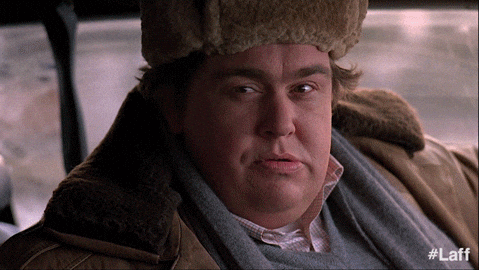 Giphy
GiphyIf off the top of your head, you don’t know what Matthew 5:37 says, no worries, here ya go: “But let your ‘Yes’ be ‘Yes,’ and your ‘No,’ ‘No.’ For whatever is more than these is from the evil one.” That verse right there? Oh, it’s a boundaries lifesaver! I say that because do you see “maybe” or “I’ll think about it” in there? Nope. LOL. It says that you should tell people “yes” or “no” and leave it at that — and that complements Anne Lamott’s quote, “’No’ is a complete sentence” impeccably well. Yeah, you’ve got to remember that anything beyond a yes or no to a request is privileged information; you don’t owe anyone details or an explanation.
Besides, if you are really honest with yourself, when someone asks you something and you give a “Umm, let me think about it” kind of reply, more times than not, you already know what your answer is going to be — so why not let you both off of the hook? Give your response. Commit to that. And let everyone (including yourself) get on with their lives and schedules.
I promise you that when it comes to those holiday parties, you are pissing more folks off by not RSVP’ing or doing so and not showing up than just saying, “Thank you but not this year” off the rip.
Remember That Your Personal Space Is Privilege Not a Right
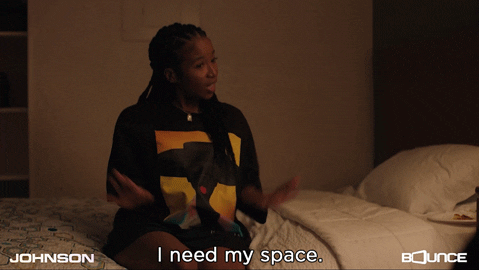 Giphy
GiphyA friend of mine recently bought a new house and invited me over to come see it. He’s a single man with no children, so as I was taking in all of the space that he had, especially as I walked through his finished basement, I joked about relatives coming to live with him. “Hell no” and “absolutely not” were pretty much his immediate responses as he went on to say that some folks even had the nerve to be offended when he told them that he had no intentions on taking DNA in.
Ain’t it wild how people think that your stuff is their right? And yes, that brings me to my next point. Your home is your sanctuary space. If you want to host folks this year — cool. If not, ALSO COOL. Please don’t let folks (family included) guilt you into how they want you to act or even into what they would do if the shoe was on the other foot. You are not them — and as one of my favorite quotes states, “If two people were exactly alike, one of them would be unnecessary.” (A man by the name Larry Dixon said that.)
Hell, my friends? They know that I am good for sending them random things that they need or even want all throughout the year. Coming over to hang out at my pace, though. Uh-uh. Chalk it up to being a card-carrying member of the ambivert club yet I like keeping my living space personal — and I sleep like a baby, each and every night, for feeling that way.
Always remember that your space, your time, your resources, your energy and shoot, yourself period (including your relationship), are all things that are your own. You get to choose how, when and why you want to share them. The holiday season is certainly no exception.
Cultivate Some “You Two Only” Traditions
 Giphy
GiphyIt’s not uncommon for some couples to hit me up after the holiday season to “detox.” Sometimes it’s due to the financial drama (and sometimes trauma) that they experienced. Sometimes it’s because they allowed their relatives (especially in-laws) to get more into their personal business than they should’ve. More than anything, though, it tends to be because they didn’t get enough quality time together and so ended up feeling “disconnected.”
Please don’t let that happen. Listen, I’m not even a holidays kind of woman and yet, I will absolutely sit myself down with some hot chocolate and chocolate chip cookies to enjoy a Hallmark holiday film or two. Aside from the fact that most of them are lighthearted and sweet, I also like that they usually focus on couples loving on each other amidst all of the holiday beauty and ambiance — which is something that all couples should set aside some time to do.
Maybe it’s a vacation. Maybe it’s a staycation. Or maybe it’s my personal favorite, A SEXCATION. Whether it’s for a few days, the weekend or even overnight — don’t you let the holidays go by without setting aside time for you and your man to celebrate one another. Don’t you dare (check out “Are You Ready To Have Some Very Merry 'Christmas Sex'?”).
GET. SOME. REST.
 Giphy
GiphyI once read that 8 out of 10 people get stressed out over the holidays and 3 out of 10 lose sleep during to it — and when you’re stress-filled and sleep-deprived, that can absolutely lead to hypersensitivity, making mountains out of molehills and even not being in the mood for sex.
Your relationship can’t afford to go through any of this, so definitely make sure to prioritize rest. I don’t care how unrealistic it might seem during this time, sleep should never be seen as a luxury; it will always and forever be a great necessity.
That said, try to get no less than six hours of shut-eye in (check out “6 Fascinating Ways Sex And Sleep Definitely Go Hand In Hand”) and even ask your bae to take a nap with you sometimes (check out “Wanna Have Some Next-Level Sex? Take A Nap, Sis.”). Not only will sleep help to restore your mind, body and spirit but, when it’s with your partner, it’s an act of intimacy that can make you both feel super connected, even in the midst of what might feel like chaos.
___
Holiday season stress is real. Still, never give it the permission or power to throw your relationship off. Put you and your man first and let the holidays be what they are gonna be, chile.
Let’s make things inbox official! Sign up for the xoNecole newsletter for love, wellness, career, and exclusive content delivered straight to your inbox.
Featured image by Shutterstock
While doing a podcast interview a couple of weeks ago, when I said my age, the interviewer complimented me by saying that what I said is not what they would’ve guessed. When they asked what the secret was, the first thing that came out of my mouth was, “Oh, I’m gonna take me a nap.”
I adore sleep. I’ve said before that it’s like what Six Flags is to some people. And really, it’s just a plus that there are so many health benefits from getting plenty of rest. Beauty-wise, science does reveal that getting no less than seven hours a night can slow down signs of aging. Know what else? There are some direct things that sleep — and the lack thereof — can do to your immunity as well.
And so, since this is the time of year when catching a cold (and/or the flu) is common, let’s talk about the impact that sleep (and again, a lack thereof) has on your immune system. That way, you can remain as healthy as possible during the fall and winter seasons.
1. Less Sleep Means More Colds
 Giphy
GiphyLike I stated in the intro, I’m pretty sure you’ve heard somewhere that the fall and winter are the seasons when people are most susceptible to catching a cold or coming down with the flu. And that’s exactly why I thought I would start this all off by sharing the fact that some studies reveal that if you get less than six hours of sleep, on a consistent basis, you end up making yourself more vulnerable to coming down with both. In fact, some research says that only 18 percent of people who get six-plus hours of rest caught a cold while almost 40 percent who got less than that did.
The logic behind it all is sleep gives your body time to build up the proteins and cells (like cytokines and T-cells) that you need to fight off certain viruses. So, if nothing bothers you more than having a stuffy nose or stubborn cough when it’s cold outside, getting more sleep is one way to prevent that from happening to you.
2. Less Sleep Means More Allergy Symptoms
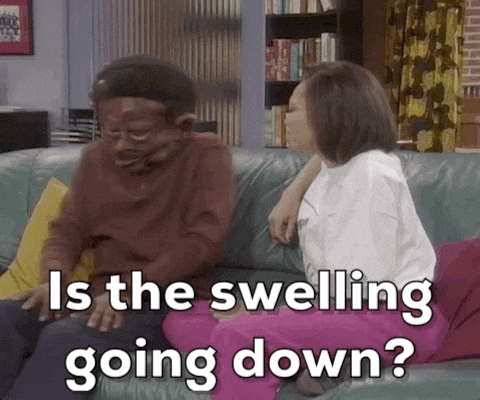 Giphy
GiphyAt the end of the day, an allergy is basically what transpires whenever your immune system “overreacts” to something that other people’s systems do not. And since sleep is what helps to keep your immune system nice and strong — well, I’m sure you get how less allergy-related symptoms and more sleep go hand in hand. Also, since sleep helps to decrease bodily inflammation (more on that in a bit) and inflammation can also intensify allergy symptoms, that’s just one more reason to get as much shut-eye as possible.
3. Less Sleep Means Potential Diabetes and Heart Disease
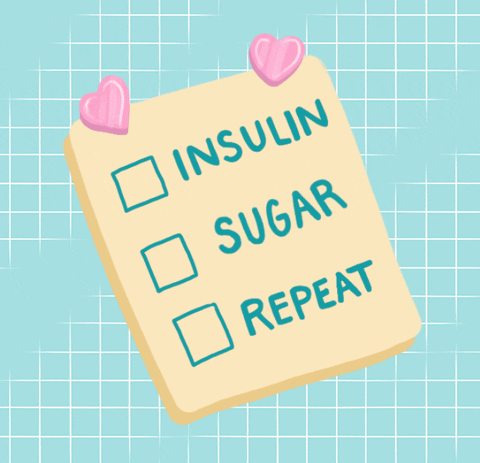 Giphy
GiphyDid you know that in 2024, Black women were diagnosed with diabetes 24 percent more than any other adult demographic. Also, it continues to be a reality that heart disease is the leading cause of death for Black women. These two sobering statistics alone should be enough of an incentive to do whatever you can to keep the risk of diabetes and heart disease way down.
One way to do that is by getting more sleep. Aside from the fact that sleep strengthens your immune system to where it is easier for you to fight off illness and diseases, sleep can keep your blood sugar levels in a healthy space; plus, when it comes to your heart, it gives it, along with your arteries and blood vessels a break.
4. Less Sleep Means Less Time for Your Body to Push “Reset”
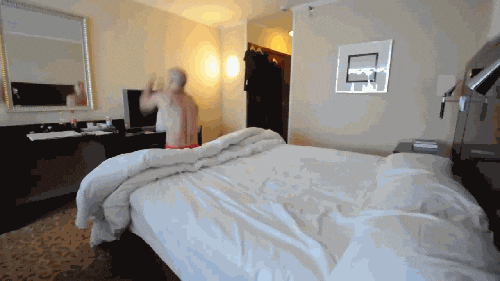 Giphy
GiphyIf you really stopped to consider all that your body goes through during the day (you can read some about that here), you definitely would respect it enough to do your best to thank it by giving it no less than six hours of sleep, each and every night. Sleep is what helps to slow your brain and body down so they are able to “refuel” for the next day. After all, how can your body prevent you from getting sick if your immune system is too worn out to fight ailments off? Exactly.
5. More Sleep Helps You to Fight Off Infections
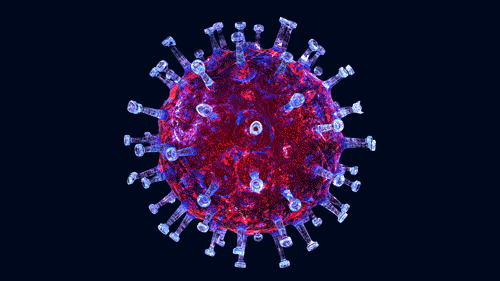 Giphy
GiphySpeaking of, in order for your body to fight off infections, there are certain cells and antibodies within you that need to be healthy and strong — one way that they get and stay that way is by you getting a good amount of sleep. For instance, remember when I touched on cytokines earlier? Well, the same way that they help to prevent colds, they also help to prevent infections too. And since sleep lowers your cortisol (stress) levels, rest gives your body the time and space to build up an army that can fight off free radicals and other health-related challenges while you are awake.
6. More Sleep Lowers Bodily Inflammation
 Giphy
GiphyWhenever a health-related issue is mentioned on this platform, inflammation is something that is mentioned quite a bit. Probably the easiest way to explain inflammation is it’s how your body responds/reacts whenever something is happening to your body that shouldn’t be, whether it’s an illness, an injury, a germ or something that you may be allergic to.
If you happen to have chronic inflammation, some symptoms that are associated with that include fatigue, stiff joints, skin rashes, weight gain and moodiness.
The interesting thing about all of this is if you aren’t getting enough rest, you could be triggering inflammation in your body. That’s because studies reveal that a lack of sleep can elevate molecules that are associated with inflammation. So, if you don’t want inflammation to increase within your system, you should definitely catch more zzz’s.
7. More Sleep Regulates Hormones
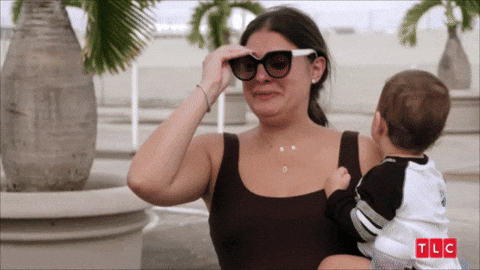 Giphy
GiphyWhen it comes to hormones like serotonin, estrogen and cortisol, believe it or not, they play a role in how your immune system acts and overreacts. That’s because, if your hormones are out of balance, that can cause your immune system to work harder than it actually should and that can make you more vulnerable to sickness. One way to keep your hormones leveled out? SLEEP.
That’s because sleep gives your body the opportunity to rest, repair and restore your hormone levels. On the other hand, when you are sleep deprived, that can put/keep your hormones on the ultimate roller coaster ride. #notgood
8. More Sleep Strengthens Vaccines
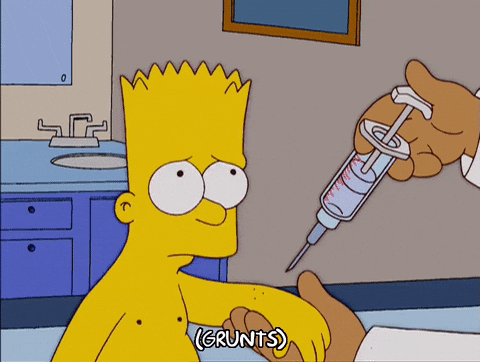 flu shot GIF - Find & Share on GIPHYGiphy
flu shot GIF - Find & Share on GIPHYGiphyIf you’re someone who is good for getting some sort of vaccine around this time of the year, make sure that you rest up before and after getting your shots. Not only does adequate rest before a vaccination help your immune system to be better receptive to your shots but sleep also helps your body to build up enough antibodies to make your vaccinations effective after getting them. Because if you’re gonna get pricked, shouldn’t it be worth it? My thoughts exactly.
Get some freakin’ sleep! Your immune system depends on it.
Let’s make things inbox official! Sign up for the xoNecole newsletter for love, wellness, career, and exclusive content delivered straight to your inbox.
Featured image by Shutterstock

